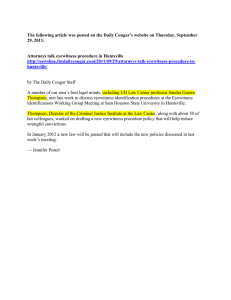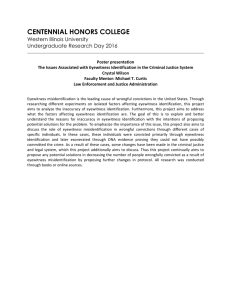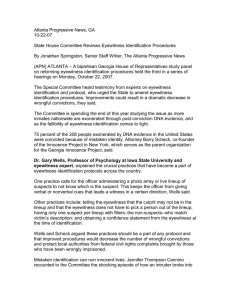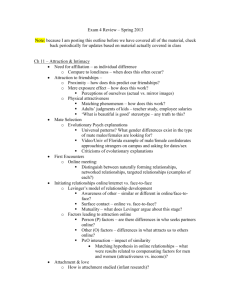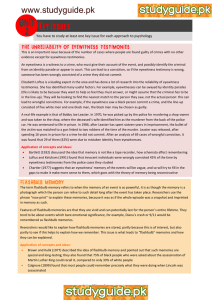News and Observer, NC 07-24-07 New lineup rules pass
advertisement
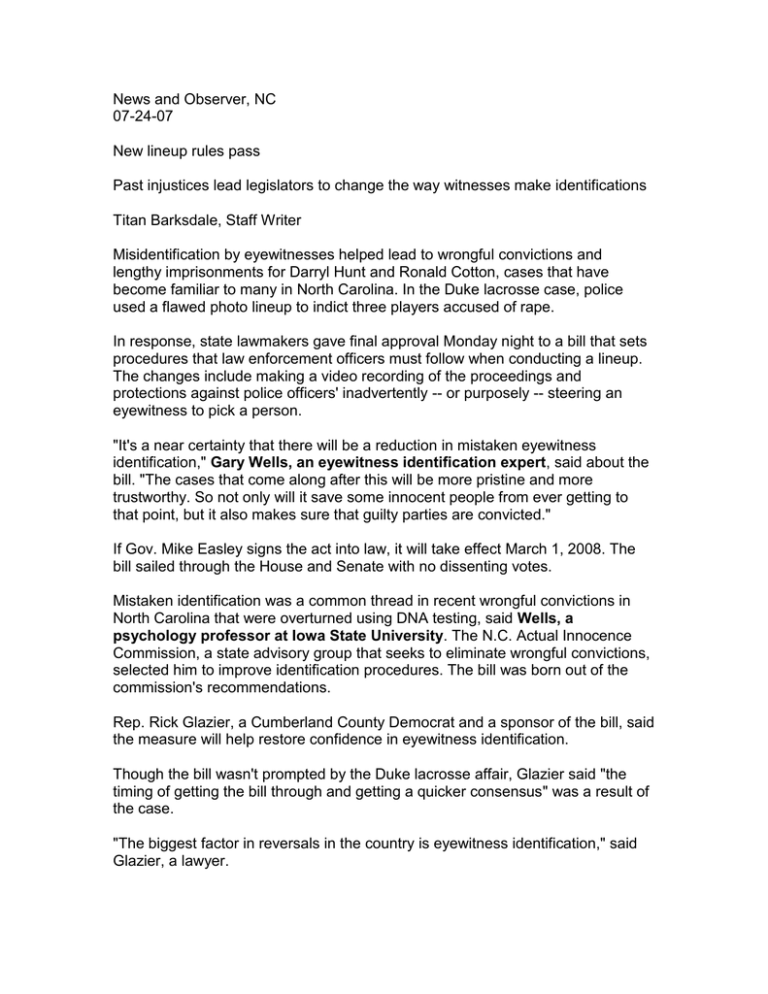
News and Observer, NC 07-24-07 New lineup rules pass Past injustices lead legislators to change the way witnesses make identifications Titan Barksdale, Staff Writer Misidentification by eyewitnesses helped lead to wrongful convictions and lengthy imprisonments for Darryl Hunt and Ronald Cotton, cases that have become familiar to many in North Carolina. In the Duke lacrosse case, police used a flawed photo lineup to indict three players accused of rape. In response, state lawmakers gave final approval Monday night to a bill that sets procedures that law enforcement officers must follow when conducting a lineup. The changes include making a video recording of the proceedings and protections against police officers' inadvertently -- or purposely -- steering an eyewitness to pick a person. "It's a near certainty that there will be a reduction in mistaken eyewitness identification," Gary Wells, an eyewitness identification expert, said about the bill. "The cases that come along after this will be more pristine and more trustworthy. So not only will it save some innocent people from ever getting to that point, but it also makes sure that guilty parties are convicted." If Gov. Mike Easley signs the act into law, it will take effect March 1, 2008. The bill sailed through the House and Senate with no dissenting votes. Mistaken identification was a common thread in recent wrongful convictions in North Carolina that were overturned using DNA testing, said Wells, a psychology professor at Iowa State University. The N.C. Actual Innocence Commission, a state advisory group that seeks to eliminate wrongful convictions, selected him to improve identification procedures. The bill was born out of the commission's recommendations. Rep. Rick Glazier, a Cumberland County Democrat and a sponsor of the bill, said the measure will help restore confidence in eyewitness identification. Though the bill wasn't prompted by the Duke lacrosse affair, Glazier said "the timing of getting the bill through and getting a quicker consensus" was a result of the case. "The biggest factor in reversals in the country is eyewitness identification," said Glazier, a lawyer. Wrongly imprisoned Glazier represented Lesly Jean, a man who was mistakenly identified as a rapist. Jean, a 47-year-old former Marine, was wrongly convicted in 1982, and spent nearly 10 years in prison before DNA evidence exonerated him. No one else has been charged. Jean's case is one of the earlier examples of how eyewitness identification backfired. Three years later, Hunt was wrongly convicted of murder in the death of a newspaper copy editor and spent more than 18 years in prison. He was exonerated in 2004 after DNA matched another man, who confessed to the crimes. Cotton was freed in 1995 after being exonerated by DNA testing after serving 11 years in prison. Cotton had been convicted of rape largely on the testimony of a victim who mistakenly identified him. Peg Dorer, executive director of N.C. Conference of District Attorneys, said the conference does not have an official stance on the bill. She thinks the changes could help prosecutors present stronger cases, but she is concerned about the whether smaller, rural law enforcement officers can comply with the required procedures because they have fewer resources. "Some of the rural counties may not be able to comply, and it can become a real issue in a case," Dorer said. Staff writer Titan Barksdale can be reached at 829-4802 or titan.barksdale@newsobserver.com.

